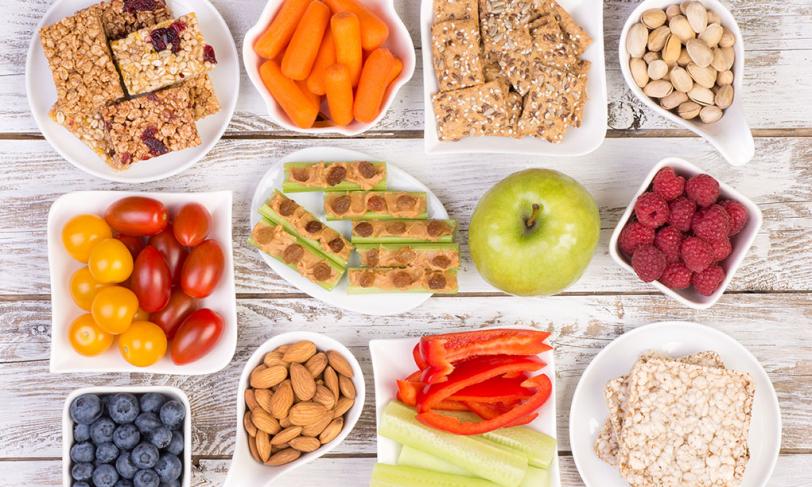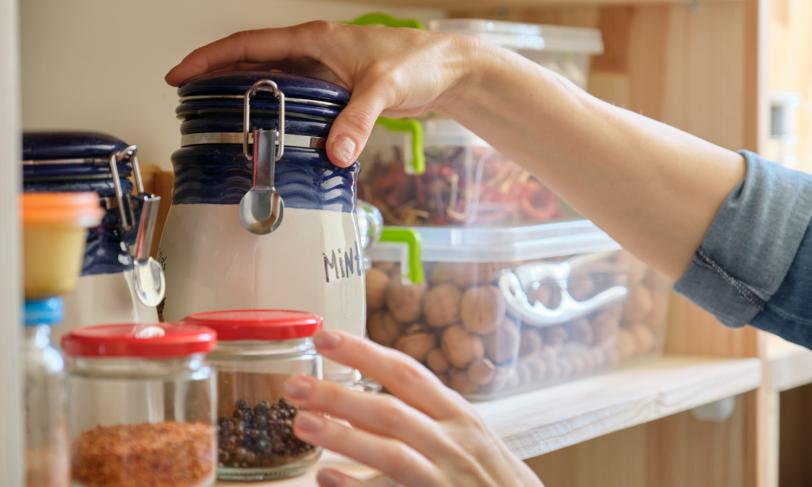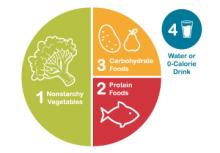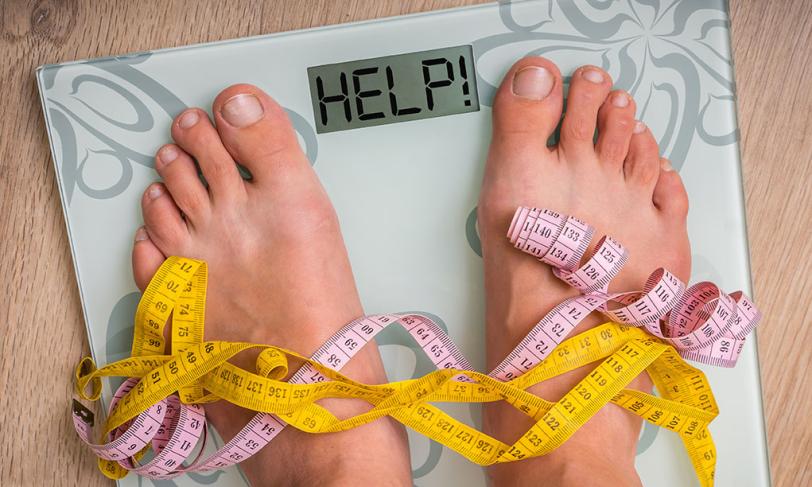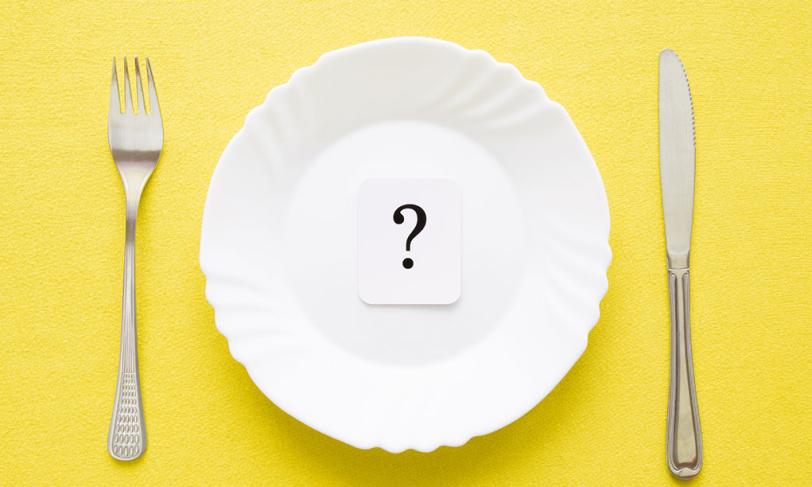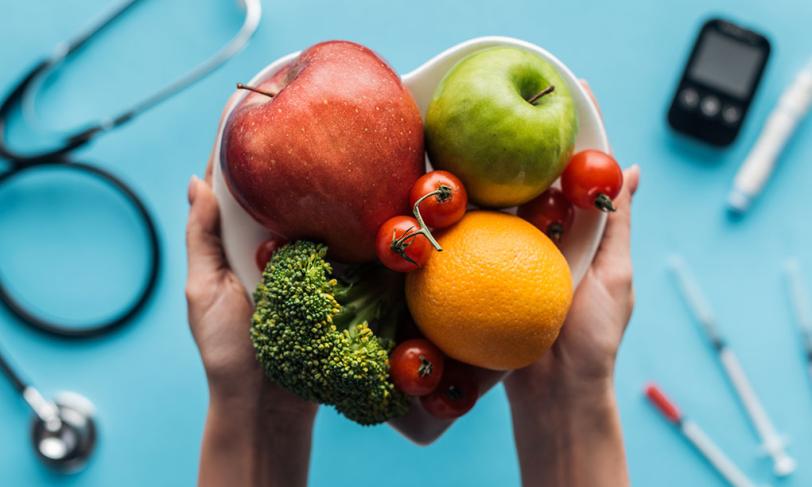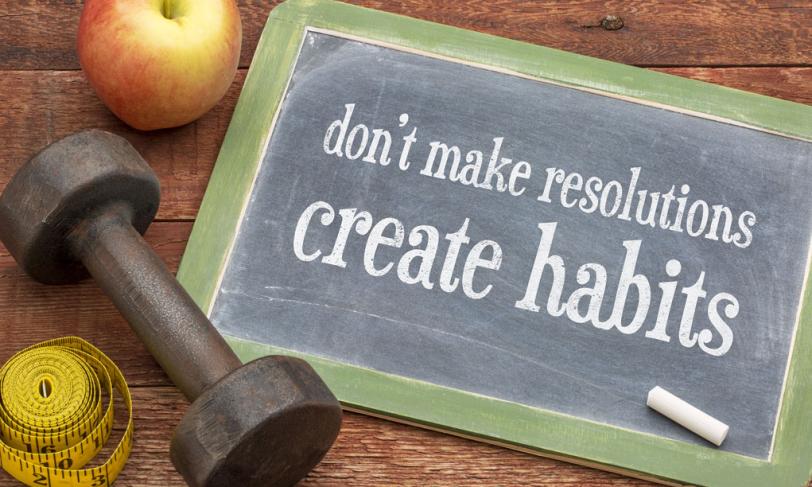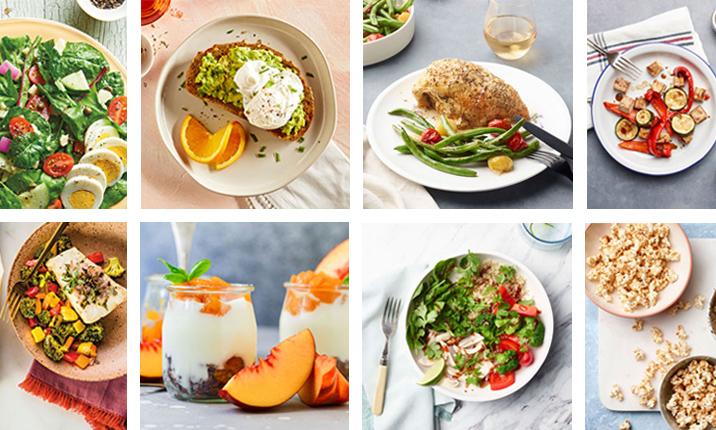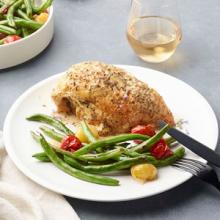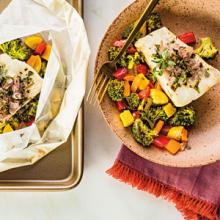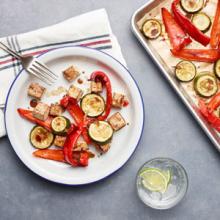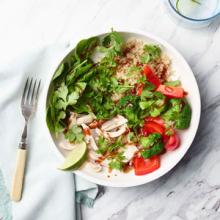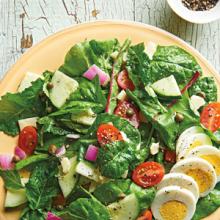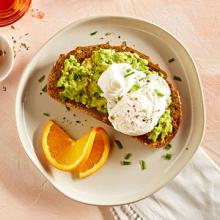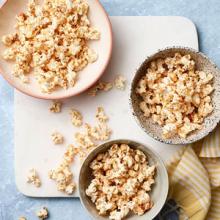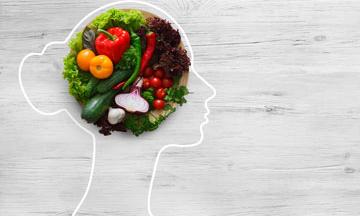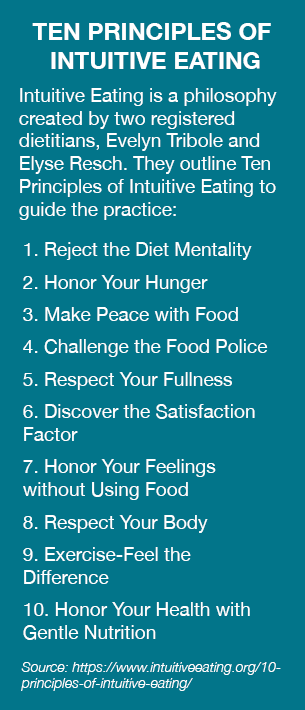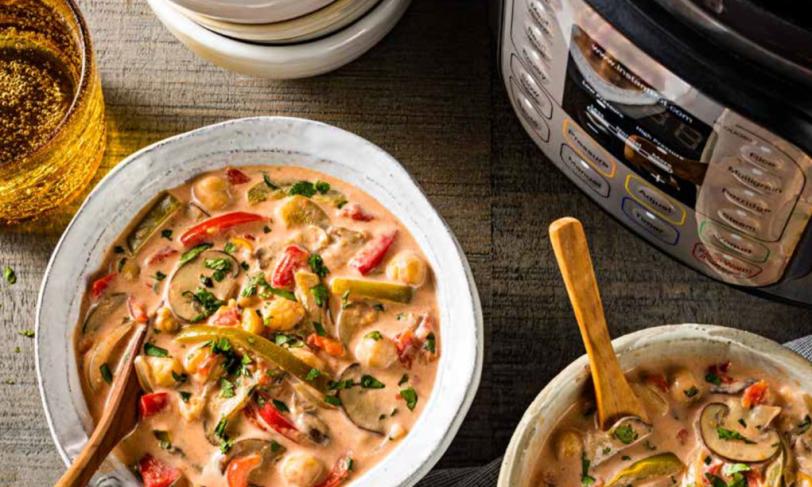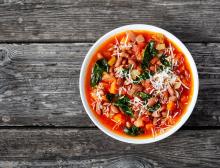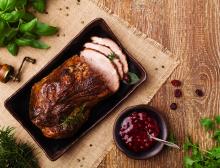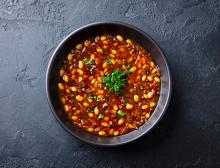COVID-19 is causing closures, quarantine, and “social distancing” protocols across the nation. For many, this means eating more meals at home, and possibly limited access to grocery stores. Eating healthy in this situation can be challenging, but it is possible! We’ve got tips on what to buy at the grocery store, and easy recipes that you can prepare with low cost groceries that you may already have in your pantry.
We’ll be updating this article with more tips and recipes over the coming days, so please check back often. You can also visit the ADA’s primary COVID-19 information page here to see FAQs, sick-day tips, and diabetes-related updates.
In this article:
Going to the grocery store increases your risk of exposure to the coronavirus. Consider getting groceries delivered if possible, or having a friend or family shop you for you if you are at high risk. If you must go the store, buy enough to last a week or two so that you don’t have to go as often.
There are also many precautions you can take to stay safe. Read our article on safe grocery shopping to learn more.
When shopping, stock up on shelf-stable foods. Versatility is also important—look for foods that can be used in a wide variety of recipes, or make a quick and easy snack on their own.
As you’re looking for recipes and making your shopping list, write down alternates or substitutions in case you can’t find certain things at the store.
Frozen Foods
- Stock up on your favorite frozen vegetables! Good choices are: broccoli, spinach, cauliflower, edamame, green beans, etc.
- Frozen fruits—great for smoothies or adding to yogurt or oatmeal
- If you’re having trouble finding frozen foods due to shortages, buy fresh and freeze it yourself (see below)
How to Freeze Fresh Foods
Vegetables:
- Dice onions, bell peppers, carrots, etc; portion in freezer-safe bags and pop them straight in the freezer.
- For vegetables like broccoli and spinach: cook in boiling water for 1-2 minutes, then drop in ice water. Drain thoroughly and freeze.
- To keep things from clumping together, lay chopped veggies out on a baking sheet and freeze for at least a couple of hours, then transfer to a freezer-safe bag.
Fresh herbs: chop and store in ice cube trays submerged in water or oil. Once they are frozen solid, you can transfer them to a freezer-safe bag.
Fresh fruit that freezes well: berries, pineapple, bananas, mango, peaches, plums, apricots.
Meat, fish, poultry: wrap in plastic wrap and aluminum foil to protect from freezer burn, or store in airtight, freezer bag (remove as much air as possible before sealing).
- Thaw before using: the safest method for thawing raw meat is in the refrigerator (it can take one or more days to completely thaw). If you need to thaw faster, you can thaw under cold, running water in the sink, or in the microwave. Do NOT thaw raw meat on the counter.
Dairy: milk, yogurt, cheese, and butter all freeze well. For milk and other liquids, leave space in the container—liquids expand when they freeze.
Fresh Produce
Buy fresh produce with a longer shelf life.
- Longest shelf life (store on counter or in pantry): onions, potatoes, sweet potatoes, garlic, winter squash, and melons.
- Medium shelf life (store in fridge): cabbage, bagged greens such as kale and collards, summer squash, brussels sprouts, cauliflower, broccoli, carrots, beets (remove greens if attached), apples, and citrus fruit.
Canned/Jarred Foods
- Canned protein like tuna, salmon, chicken, sardines, anchovies—look for options packed in water instead of oil.
- Canned vegetables—look for low sodium or no-salt-added if possible.
- Canned tomatoes—buy some large cans of tomatoes (diced, crushed, or whole)—they’re a good base for any number of soups, stews, chilis, and sauces.
- Canned fruit—look for fruit packed in water or 100% juice (not heavy syrup).
- Applesauce—look for no sugar added.
- Premade sauces like spaghetti sauce, pesto, etc. Check the international aisle for things like curry sauces—these can make for quick, easy, and flavorful meals.
- Broth (chicken, beef, vegetable)—look for low sodium if possible. Use as a starting point for soups and stews.
Dry goods
- Whole grains like brown rice, quinoa, oatmeal, popcorn (great for snacking!), bulgur, barley, farro, etc.
- Dry beans—if you have an Instant Pot or other multi-cooker, now’s the time to test out cooking dry beans in it!
- Lentils—these cook much faster than other dry beans.
- Pasta—look for whole grain. Try out legume-based pastas like lentil or chickpea (garbanzo bean) pasta for more protein and fiber.
- Cereal/granola—look for low sugar varieties.
- Nuts and nut butters—these are a good source of protein and healthy fats.
Pantry Staples
- Oils, herbs and spices, vinegars, and baking supplies will last a very long time and are essentials for most recipes.
- Condiments like soy sauce, mustard, hot sauce, salsa, ketchup, mayonnaise, reduced fat sour cream, and light cream cheese.
- Instant meals—instant soups, boxed mac and cheese, hamburger helper, rice-a-roni—all work in a pinch, though there are some things to keep in mind with these:
- Look for lower sodium varieties if possible. If it comes with a separate flavor/seasoning packet, use half to cut sodium and add your own spices to taste.
- Give them a nutrition boost by adding some fresh, frozen, or canned vegetables.
- Make them more filling by adding protein—canned tuna or chicken, eggs, leftover cooked meat, or beans.
Find flexible recipes where you can easily sub in different vegetables, proteins, and grains, depending on what you have on hand. Things like stir-fry, soups, stews, frittatas, and meatloaf are versatile dishes that can use almost any combination of vegetables, protein, and grains.
When putting together a meal, use the Diabetes Plate Method to build balanced meals with appropriate portion sizes.
Filling half your plate with vegetables will provide fiber, vitamins, and minerals you need to stay healthy. A small portion of protein in one quarter of your plate is all you need to stay full and satisfied.
Finish off your meal by filling one quarter of your plate with a carb-rich food like whole grains, beans, starchy vegetables like potatoes or corn, or fruit. Limiting carb foods to one quarter of your plate helps keep portions in check to prevent spikes in blood glucose.
You can use this same formula when putting together mixed dishes like soup or casserole—it should be made up of mostly vegetables, one quarter protein, and one quarter carb foods.
COVID-19: What Can I Eat? from American Diabetes Association on Vimeo.
If you’re working at home for the first time, you’re probably having to get used to a new lunch routine. Read this article for more advice on preparing healthy, work-from-home lunches.
Here are some flexible recipe options that use mostly low-cost, shelf-stable ingredients. You can easily adapt these recipes to whatever you have in your pantry, fridge, or freezer. Sub out fresh vegetables for canned or frozen if needed. If you’re missing any spices or seasonings, swap them out for whatever you do have, or just leave it out.
Don’t overthink things and don’t be afraid to get creative! Let these recipes inspire you to develop your own version using what you have. For more ideas, check out this article for some “non-recipe” ideas for snacks and meals with just a few ingredients
Browse Easy Pantry Recipes
Chili
You can make a great pot of chili almost entirely out of canned and frozen foods. Use canned beans like black beans, kidney beans, or pinto beans. (You could even use dried lentils—they’ll cook through while everything simmers together). Add canned tomatoes and corn. For extra spice and flavor, add canned green chilies and chipotles in adobo. You could keep it vegetarian or add lean ground beef, turkey, or chicken. Try one of these recipes:
Stir Fry
You can use an endless combination of protein and vegetables to make a quick and easy stir fry with whatever you have on hand. You can use fresh or frozen vegetables, and pretty much any protein—chicken, steak, pork, shrimp, tofu, or beans. Or use eggs and rice for a veggie fried rice. There are almost endless possibilities. Pair it with a grain like brown rice or quinoa, or cauliflower “rice” or zucchini “noodles” for a low-carb, veggie-packed meal.
Meatloaf
Budget-friendly and super easy to prepare. You can use lean ground beef, turkey, or chicken. Add vegetables like diced bell pepper, onion, garlic. Bind it together with chopped oats instead of bread crumbs for a little extra fiber. Try one of these recipes:
Eggs
Eggs have a long shelf-life, are inexpensive, and are extremely versatile.
Hard boiled eggs are a quick and easy high protein, low carb snack. They’re also great to add to a salad for extra protein, or chop them up and make an egg salad.
Frittata sounds a little fancy, but is a flexible dish that’s easy to whip up for breakfast, lunch, or dinner. Use whatever vegetables you have on have on hand. Cook it all in a skillet, or divide it in a muffin tin for individual egg “muffins.”
Have you heard of shakshuka? This north African dish has been popping up on brunch menus, but it’s also incredibly easy to make at home, and with ingredients you probably already have on hand. Our recipe adds ingredients to boost the flavor, but the dish is essentially just eggs cooked in a rich tomato sauce. Get creative with seasonings and add in other vegetables that you have on hand.
Soups
You can basically follow a formula to make any soup out of whatever ingredients you have on hand. It’s a simple combination of a protein (could be meat, poultry, seafood, beans, or tofu), vegetables (could be fresh, frozen, or canned), and liquid (beef, vegetable, or chicken broth, or even just water). Add grains like brown rice, quinoa, barley, or pasta for something heartier. Here are some budget-friendly recipes to try:
With social distancing in place and many of you with kids, and even the entire family at home, do you find yourself wondering, “How can we enjoy snacks and keep it healthy?”
When hunger hits, select snacks with 3 simple things in mind:
- First – and this is especially important if you or a family member has diabetes – select snacks that promote keeping blood glucose in range.
- Second, snacks are a great opportunity to fit in a non-starchy vegetable or fruit.
- And lastly, snacks should be easy to prepare, satisfying, and tasty!
When it comes to managing portion sizes of your snacks…
One tried and true strategy is to purchase snacks in single servings if possible. Things like individual cups of yogurt or cottage cheese, mozzarella cheese sticks, or natural applesauce cups or cups of fruit packed in juice or water. And if you think about it, many fresh fruits are perfectly portioned – a small apple, tangerine, a plum, or a small pear are a few examples.
A second strategy is to portion snacks yourself at home in zip-top bags or individual serving containers, so no thinking required when it’s time for a snack. This can work for things like small portions of nuts. Choose heart-healthy almonds, walnuts, pistachios, or peanuts.
Here are some simple snack ideas with things you may already have on hand:
- Air-popped or light microwave popcorn. Did you know you can pop plain popcorn kernels in a small brown paper sack? Pump up flavor with a sprinkle of black pepper and parmesan cheese. 3 cups will have about 15 g carbohydrate. This is a simple, tasty whole grain snack. Many don’t realize that popcorn is a healthy whole grain. It’s plant-based too if you’re trying to eat more plant-based foods.
- Single serving tuna salad. You may find foil packs or mini cans of water-packed tuna or salmon or your pantry shelves. This is a great snack packed with heart-healthy omega-3 fats. Add a spoonful of light mayonnaise or plain yogurt for a creamy tuna salad. Eat it by it self, or with whole-grain crackers or veggies like sliced cucumber or bell pepper strips.
- Top a slice of whole wheat or sprouted grain bread, or a whole-grain toaster waffle, with almond butter or peanut butter. You get a whole grain and a little protein and healthy fat from the nut butter. If you have room to fit in a few more carbs, slice on half a banana. (about 30 carbs)
- Get creative with a yogurt parfait. Choose plain yogurt to avoid added sugars. Greek and Icelandic yogurts are lower in carbohydrate and richer in protein, so go for that if an option. Layer yogurt with any combination of fresh, frozen, or canned fruits. This snack fits in dairy and fruit for around 30 carbs.
Click here for more tips on healthy snacking
Snack recipes
